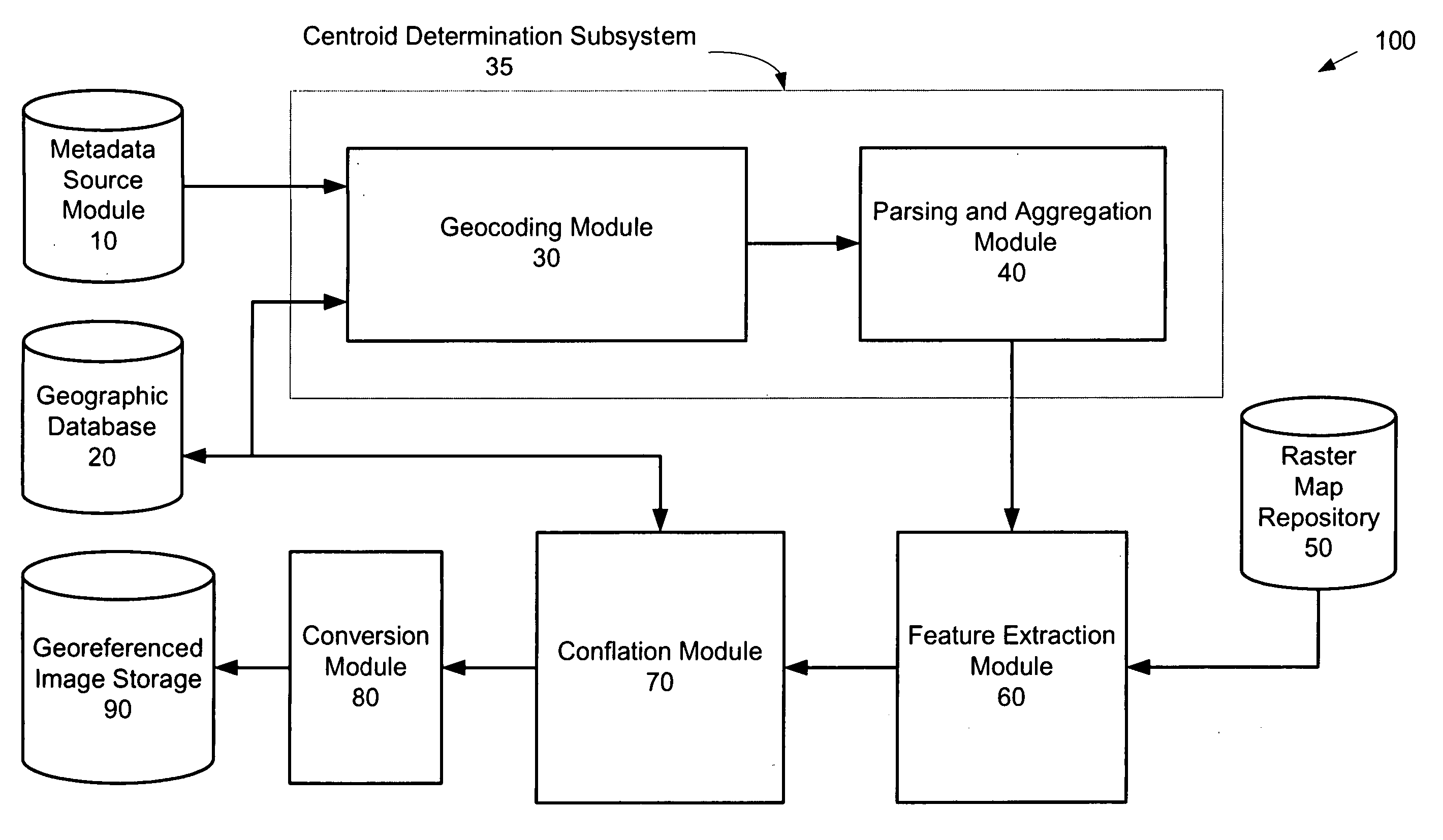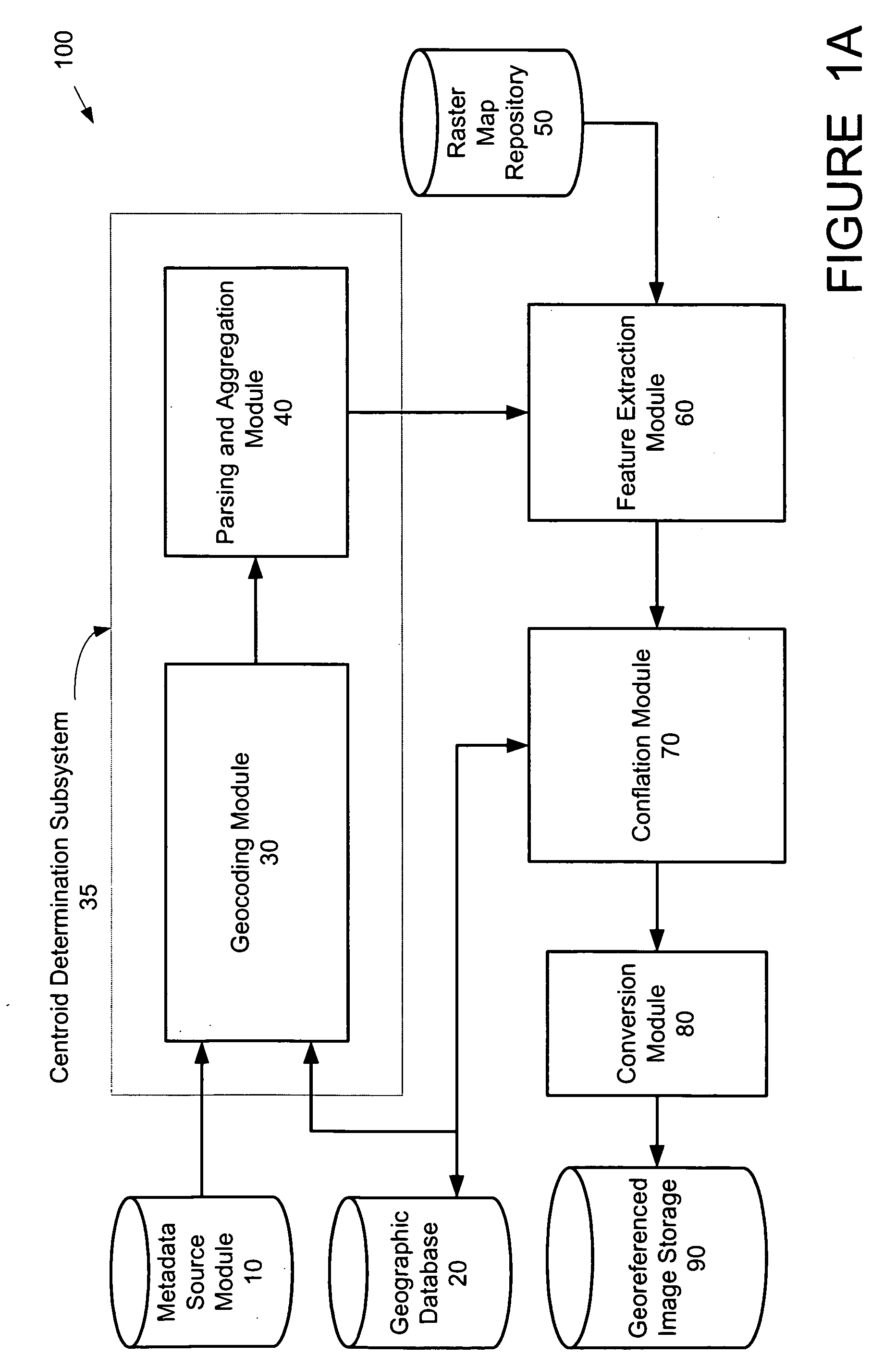Automated georeferencing of digitized map images
- Summary
- Abstract
- Description
- Claims
- Application Information
AI Technical Summary
Benefits of technology
Problems solved by technology
Method used
Image
Examples
Embodiment Construction
[0038] The invention is described in detail with particular reference to certain preferred embodiments, but with the spirit and scope of the invention, the invention is not limited to such embodiments. Those of skill in the art will appreciate that various features, variations, and modifications can be included or excluded, with the limits defined by the claims and the requirements of a particular use.
[0039] The present invention extends the functionality of current georeferencing systems by allowing users to automatically generate co-position alignment of geographic target vectors and raster map image data with exceptional accuracy by determining the centroid of the raster map area of coverage prior to extracting information from the raster map data. The present system has many advantages over prior systems such as those requiring extensive operator interaction, because the accurate automated generation of co-registered data permits quick and affordable control of the validation a...
PUM
 Login to View More
Login to View More Abstract
Description
Claims
Application Information
 Login to View More
Login to View More - R&D
- Intellectual Property
- Life Sciences
- Materials
- Tech Scout
- Unparalleled Data Quality
- Higher Quality Content
- 60% Fewer Hallucinations
Browse by: Latest US Patents, China's latest patents, Technical Efficacy Thesaurus, Application Domain, Technology Topic, Popular Technical Reports.
© 2025 PatSnap. All rights reserved.Legal|Privacy policy|Modern Slavery Act Transparency Statement|Sitemap|About US| Contact US: help@patsnap.com



